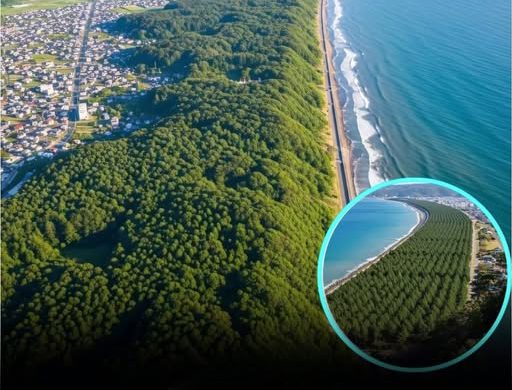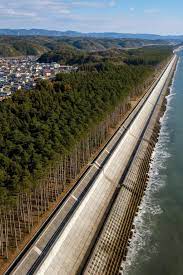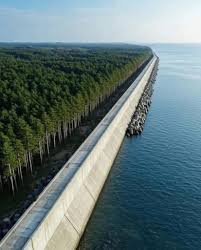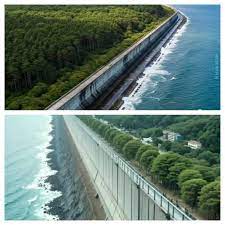The Green Tsunami Wall: Japan’s Hybrid Disaster Defense Model

Japan has unveiled a massive 395-kilometer tsunami wall designed to shield coastal communities from future tsunamis, storm surges, and rising sea levels. The project’s unique feature, however, is its commitment to nature, establishing a truly sustainable hybrid defense system.
Alongside the formidable concrete engineering, 9 million trees were planted to create a living green barrier. These coastal forests serve critical functions:
Wave Impact Absorption: The dense root systems and tree trunks significantly slow down and absorb the energy of incoming waves, mitigating the impact on the wall and the communities beyond.
Erosion Control: The root structures stabilize the soil, preventing erosion and maintaining the integrity of the coastal landscape.
Ecological Balance: The forests restore ecological balance, providing habitat for wildlife and integrating the defense structure more harmoniously into the environment.
A Global Blueprint for Resilience
International experts hail this system as a global model for sustainable disaster preparedness. By combining human engineering with environmental resilience, Japan demonstrates how nations can safeguard lives and valuable landscapes by working with nature rather than simply against it.
This project is more than just a defensive structure; it is a statement of Japan’s long-term commitment to balancing infrastructural development with environmental preservation, offering a blueprint for resilience worldwide.











